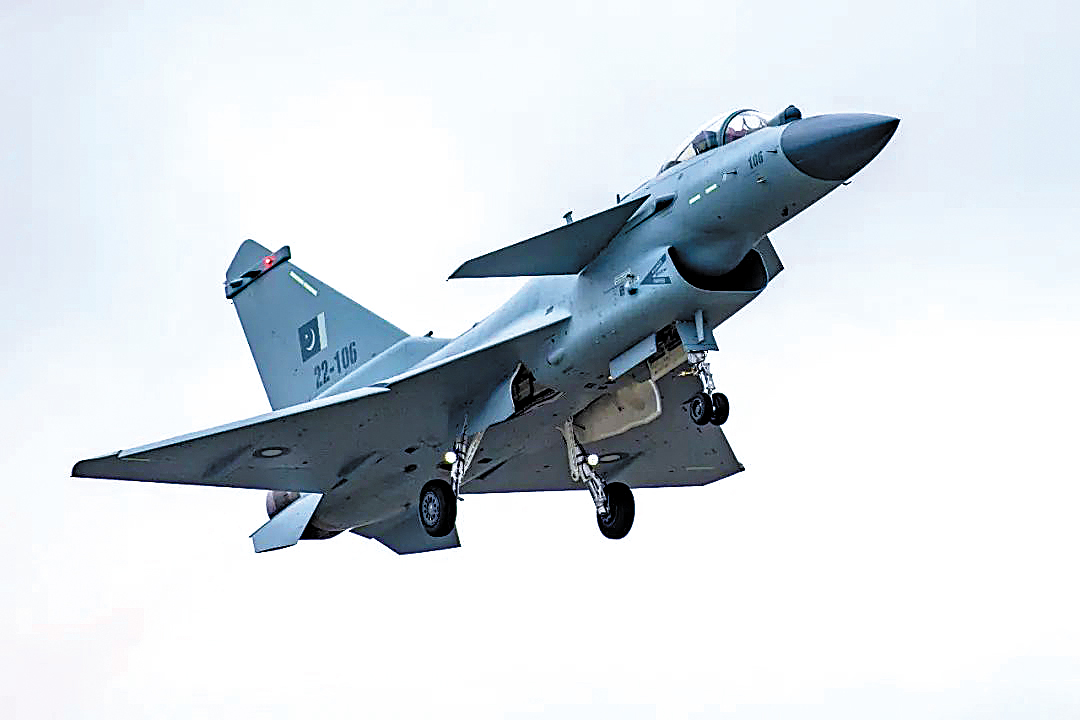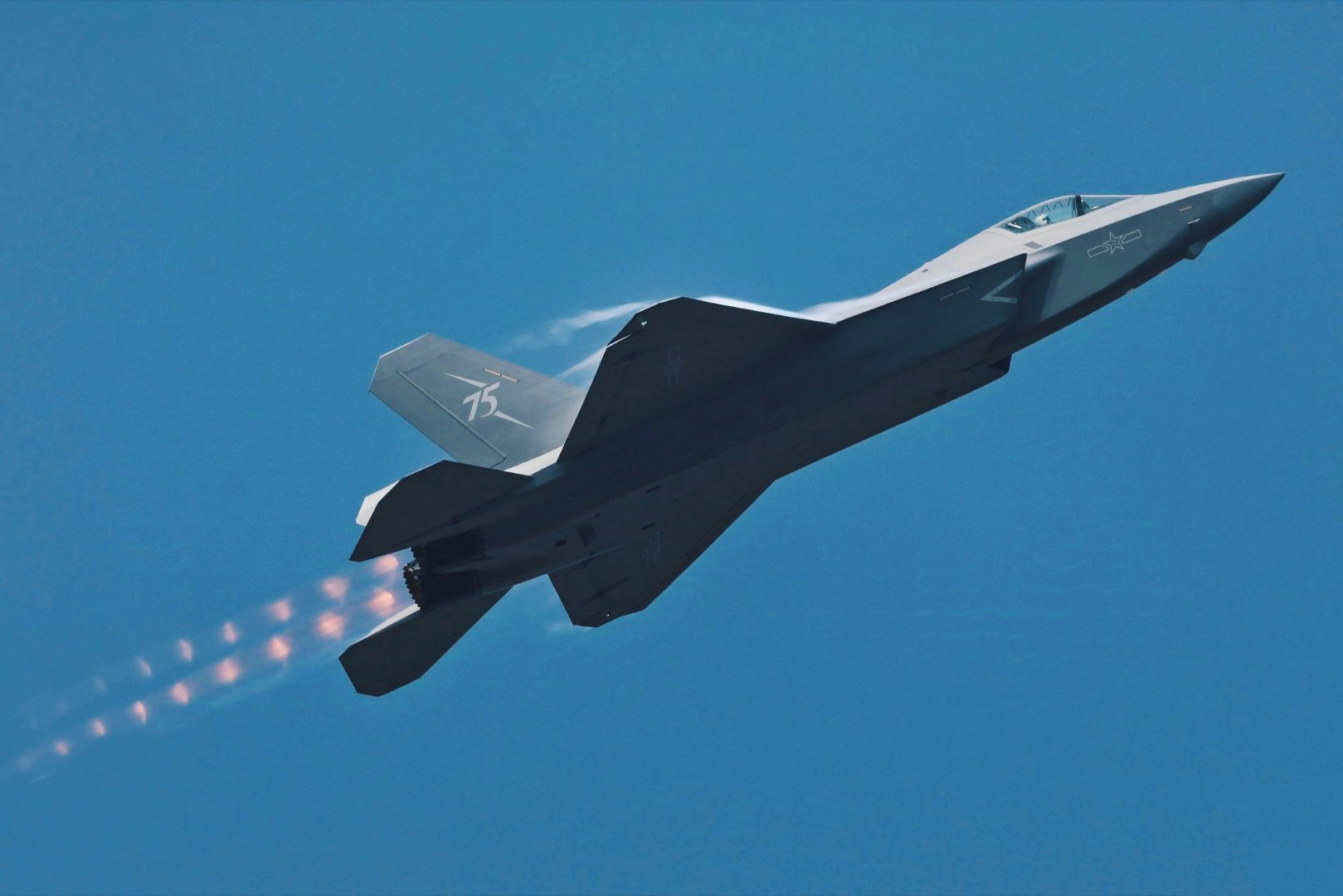J-10CE Wows Paris Air Show After Reported Rafale Kills in South Asia
Also showcased at the Paris Air Show were China’s fifth-generation stealth fighter jet, the J-35A, and the KJ-500 airborne early warning and control (AEW&C) aircraft, both of which represent the cutting edge of Beijing’s push to expand its influence in the global defence aviation market.
(DEFENCE SECURITY ASIA) –China’s J-10CE multirole fighter jet, long viewed as a capable fourth-plus-generation combat platform, has surged into the international spotlight following its high-profile showcase at the 55th Paris Air Show—buoyed by its claimed operational success in recent Pakistan-India aerial clashes.
Also showcased at the Paris Air Show were China’s fifth-generation stealth fighter jet, the J-35A, and the KJ-500 airborne early warning and control (AEW&C) aircraft, both of which represent the cutting edge of Beijing’s push to expand its influence in the global defence aviation market.
Positioned prominently at the Aviation Industry Corporation of China (AVIC) pavilion, the J-10CE appeared armed with the advanced PL-15E beyond-visual-range air-to-air missile, a weapon system now gaining international attention after its reported effectiveness during recent high-intensity engagements over South Asia.
The jet’s Paris debut marks a turning point in global perceptions of Chinese combat aviation, coming just months after claims emerged that Pakistan Air Force J-10CEs had successfully engaged and shot down multiple Indian fighter aircraft, including the French-built Rafale—a development that, if verified, could represent one of the most consequential aerial engagements in the region since the 1999 Kargil conflict.
While Indian authorities have not officially confirmed the losses, and France’s Dassault Aviation has issued denials, Pakistan’s narrative—combined with online footage, regional defence chatter, and radar tracking leaks—has sparked renewed interest in the combat viability of Chinese fighter platforms and associated weapon systems like the PL-15E.
These claims have generated a wave of interest across emerging air forces seeking cost-effective but high-capability multirole jets, particularly those seeking credible counter-air options against Western and Russian platforms.
Zhu Qian, a senior executive with AVIC and deputy head of the Chinese delegation to the air show, described the J-10CE as “a fourth-plus-generation fighter jet with state-of-the-art aerodynamic configuration and outstanding maneuverability and agility.”

“In addition, it has advanced avionics, weapons control and radar systems, and features a wide portfolio of munitions,” he added, while also noting the platform’s strength in electronic warfare and joint force integration.
“The jet can attack multiple targets from beyond visual range under complex electromagnetic environments, and can deliver precision strikes on ground targets with multiple guided munitions,” Zhu continued.
The J-10CE is an export-optimized derivative of the J-10C, featuring upgraded capabilities and full-spectrum mission adaptability, and is already in frontline service with the Pakistan Air Force (PAF) as part of its expanding counter-air doctrine.
According to the China National Aero-Technology Import and Export Corporation (CATIC)—the foreign military sales arm of AVIC—the J-10CE is a single-seat, single-engine, all-weather multirole aircraft built for high survivability, mobility, and precision engagement in contested airspace.
The aircraft excels in low- and mid-altitude dogfights, supersonic penetration, short take-off and landing, and long-range strike capability, making it an attractive option for air forces facing dynamic threat environments.
It also features a reduced radar cross-section and a modernized powerplant offering greater thrust-to-weight ratio, enabling high-G manoeuvres while maintaining operational stealth.

Compared to earlier variants like the J-10A and J-10B, the J-10CE integrates a next-generation active electronically scanned array (AESA) radar, which significantly enhances situational awareness, target discrimination, and simultaneous multi-target tracking.
This AESA radar system is believed to be key in supporting the PL-15E missile, a long-range air-to-air weapon designed to out-range both the American AIM-120D and Russia’s R-77-1 in beyond-visual-range combat.
The PL-15E’s combination of active radar guidance, dual-pulse rocket motor, and data link targeting integration has positioned it as one of the most formidable air-to-air missiles in the global arms market today.
Zhu confidently stated, “I am sure that having seen the jet’s prowess, military enthusiasts around the world will definitely pay attention to its combat performance in the future.”
The appearance of the J-10CE at this year’s Paris Air Show comes alongside the international debut of the stealth-capable J-35A—a fifth-generation platform that China aims to position as a peer competitor to the F-35 Lightning II, further signaling Beijing’s ambitions in global fighter markets.
With growing geopolitical tensions in the Indo-Pacific and Middle East, the demand for cost-effective, survivable, and export-ready combat aircraft has intensified, creating new export avenues for platforms like the J-10CE and its advanced munitions package.
AVIC’s booth, which showcases 30 different aircraft and missile systems ranging from tactical strike drones to armoured helicopters, reflects China’s strategic push to become a dominant force in the global aerospace and defence industrial base.


The Paris Air Show, organized by SIAE under the French Aerospace Industries Association, is one of the world’s premier defence and aerospace exhibitions, and AVIC’s regular participation since 1987 underscores China’s long-term bid to reshape the global defence procurement landscape.
As the J-10CE continues to demonstrate real-world relevance and battlefield credibility, and as weapons like the PL-15E gain prominence among frontline air forces, the international defence community is beginning to reassess the trajectory of Chinese aerospace capability—not just in theory, but in combat-tested practice.
— DEFENCE SECURITY ASIA


Comments are closed.